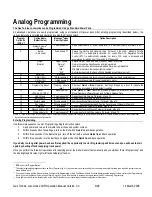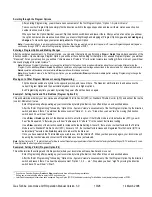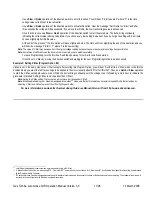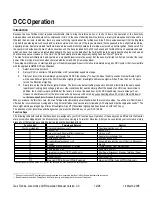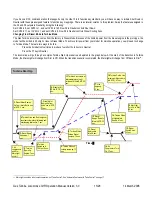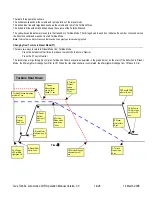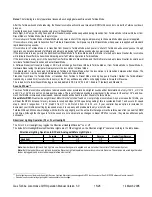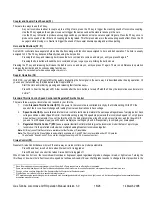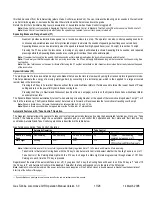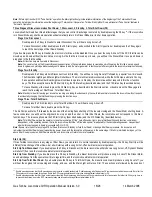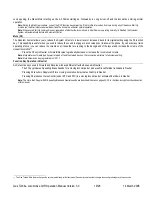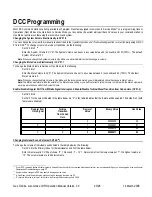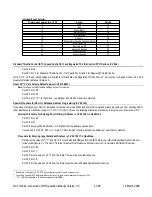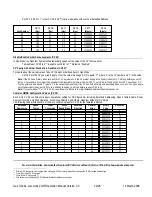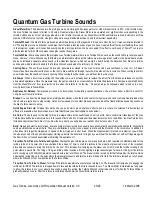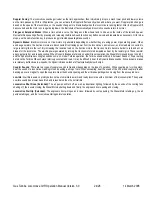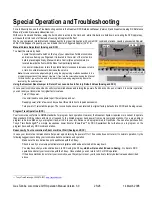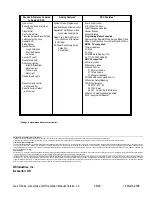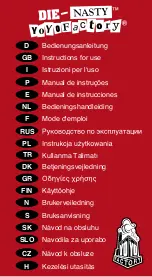
Quantum Gas Turbine Sounds
Diesel Motor Rev:
The diesel used in the prototype was a Cummings 250 horsepower motor. Under diesel control in RTC or SC throttle mode,
the Gas Turbine top speed is limited to 25 smph. Quantum allows the Diesel Motor to be operated over eight notches corresponding to the
throttle notches used on most prototype diesels. As the throttle is turned up, the Diesel Motor RPM will increase in fixed increments until the
maximum RPM occurs at notch 8. All eight notches are evenly distributed between 0 and the maximum speed step.
Turbine Whoosh:
The Gas Turbine produced an almost deafening roar that seemed to drown out all but the horn. It was sometimes referred to
as “The Big Blow” since its dominant sound was that of furiously rushing exhaust gas. We have modeled this effect by synthesizing this sound
in the Quantum system until it sounded exactly like the prototype turbine. We have coupled this effect to our Sound of Power™ concept to
provide labored Turbine Whoosh when the engine is under heavy load.
Turbine Whine:
Some witnesses to the prototype Gas Turbine maintain there is no Turbine Whine, such as the sound that a jet airplane would
make. However, other witnesses say that there was a discernable whine as the turbine was revving up that could still be barely heard at idle.
We have included a separate whine sound in the Quantum System, which can easily be heard during the transition from diesel to turbine
sounds, and which is almost buried in the Turbine Whoosh sound when the turbine is “on the line”.
Cooling Fans:
The enormous diesel motors and generators enclosed in the Gas Turbine cab need ventilation to stay cool. All diesel
locomotives have powerful cooling fans on the roof to draw outside air through louvers on the sides of the locomotive. When cooling fans start,
you will also hear the sounds of louvers opening. When cooling fans shut down, you will hear the louvers close.
Air Pumps:
When a locomotive is sitting still, the pumps come on in a steady beat to replace the air lost from the brake air release or any other
air operated appliances. Once the pressure is up, the pumps only turn on occasionally to maintain the pressure. Air Pumps are operated directly
from the Diesel Motor or from two electric motors when the turbine is “on the line”. Air pumps are quite noticeable when turned on in a non-
moving locomotive in Diesel Mode.
Appliance Air Release:
Compressed air is used on locomotives for operating various appliances. You will hear either a Short Air Let-off or
Long Air Let-off at various times.
Brakes:
You can hear the brake squeal on prototype locomotives when the locomotive is moving slowly and can become particularly loud when
the wheels are just about to stop turning. Listen at slow speeds for constant brake squeal sound and the final distinctive squealing sounds as
the Gas Turbine slows to a stop.
Quick Engine Start Up.
All diesel locomotives have a quick start up and shut down effect when a locomotive is selected. Protracted turn-on
effects are available when locomotives are in Total Shut Down (see Controllable Sounds below).
Air Horns:
The horn used for the Gas Turbine is a single chime horn usually found on early F units. Some commercial videotapes of the Gas
Turbine have dubbed a multi-chime horn in for sound effects and do not represent the actual locomotive horn. In addition, the Gas Turbine horn
includes a special short horn blast. If you blow the horn briefly, you will produce a realistic short horn sound or “hoot”.
Bells:
Diesels and electric locomotives, as well as larger steam locomotives, usually have pneumatically operated mechanical bells. Diesel bells
can be as distinctive as steam bells. They are characterized by their tone, clapper rep rate and their location in the locomotive. In addition, it
often takes time to get the clapper up to speed on the prototype or to shut down. When the Quantum bell is turned on in Neutral, you will hear
the wheezy sound of the pneumatic clapper starting up before the bell starts to ring and you will hear the bell fade out with soft rings along with
the Short Air Let-off sound associated with turning this appliance off.
Transition from Diesel to Turbine and Ignition:
Starting the gas turbine was a complex procedure which required considerable time for the
turbine to be at full power. We have shortened the amount of time to start the turbine in the model but preserved much of the important
procedures necessary to bring the turbine “on the line”. This includes first ramping up the diesel one notch to start the turbine rotating to the
point where it would fire. The firing of the gas turbine model sounds a bit like lighting a large industrial gas furnace. At this point the turbine
starts revving up with its distinctive whine coupled with a low level Whoosh. The diesel is then revved up further followed by the turbine whine
and whoosh increasing up to the point where the diesel disconnects and returns to idle. Shortly after this, the turbine is ramped up to full power
where the Whoosh or roar now dominates the Turbine Whine.
Transition from Turbine to Diesel:
Turning off the turbine was almost as complex as turning it on. The diesel is first ramped up to engage the
turbine at full RPM. The turbine is dropped down to idle and the turbine throttle is reduced to zero. The Diesel Motor is maintained a full power
to allow the turbine to cool over about 40 seconds; during this period, the Turbine Whoosh is first reduced to off while the Turbine Whine is
gradually reduced to zero. After the turbine is completely shut down, the Diesel Motor returns to idle.
Gas Turbine Locomotive Q1R Operation Manual Version 3.0
23/26
14 March 2006

